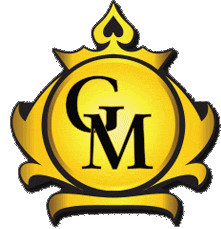European Blackjack Overview
Europeans are credited with inventing blackjack four centuries ago. Back then, renowned novelist Miguel de Cervantes mentioned shrewd card players cheating in the game of 21. Now, blackjack is played in virtual and land-based casinos, with several variations available.
The American version is just as famous as the original. It is crucial to understand the distinctions between the two if you are only familiar with the successor. Here are the fundamentals to help you get started.
Basics of the Game
Card counters have a hard time applying their talents to Contemporary European Blackjack, with eight decks of cards re-shuffled between the rounds. Peeking is not allowed either, and splitting is often limited. Many casinos prohibit the move for pairs of 4s, 5s, and 10s. This is another measure to keep card counters at bay.
In American blackjack, the dealer gets two cards with a chance to peek. This means the game ends immediately in case of blackjack – even before the players have made any moves. In the original scheme, the dealer does not see their face down card. They only do so once all the players determine their next moves.
Another peculiarity is that the dealer will only stand on a soft 17. This means their hand must include an Ace. Combinations without Aces (hard 17) do not count. Here are other distinguishing features that are crucial for your strategy:
- Doubling down is permitted for 9, 10, or 11, and split cards.
- Each hand may be split only once.
- Splitting is not applicable to 4s and 5s, as well as non-identical 10-value cards.
- You may not surrender with an Ace as the dealer’s face card.
Recommended Strategy
It begins like any other live blackjack game. The dealer draws the cards from a physical shoe. Once they have all been dealt, you ought to make your move. If you are lucky enough to have a blackjack – an Ace and a 10-value card at once, this results in an immediate win. If the dealer has a blackjack as well, the session goes into the ‘push’ mode. Money is neither lost nor won, and your wager is returned.
Hand value over 21 results in ‘busting’ – loss for the holder. If your hand is lower in value, there is a number of possible strategies.
Here are their basic definitions
- Hitting: Requesting an extra card from the dealer in order to boost hand value.
- Standing: Sticking with the current hand with no additional cards requested.
- Doubling down: Receiving an extra card in exchange for doubling of the wager; requires subsequent standing.
- Splitting: Dividing your hand into two if it includes a pair of identical cards (limitations may apply). As a result, you have two separately played hands, each with a separate bet.
- Surrendering: Leaving the table after the first hand has been dealt and 50% of the initial wager is returned.
There is no way to see the dealer’s hand value before you make your own move. Therefore, the risk is particularly high if they first draw an Ace or any 10-value card. Logically, moves, like doubling down or splitting at this point, are riskier than in American blackjack. If the dealer already has a blackjack, it will even beat your hand of 21. Therefore, many players adopt a conservative strategy for a number of reasons.
Play European Blackjack Now
The game limited to Spain, France and Germany centuries ago, is now accessible to anyone. Thanks to digital operators, there is no need to travel to a land casino. The genuine feel of the game and real money wins are now clicked away!









